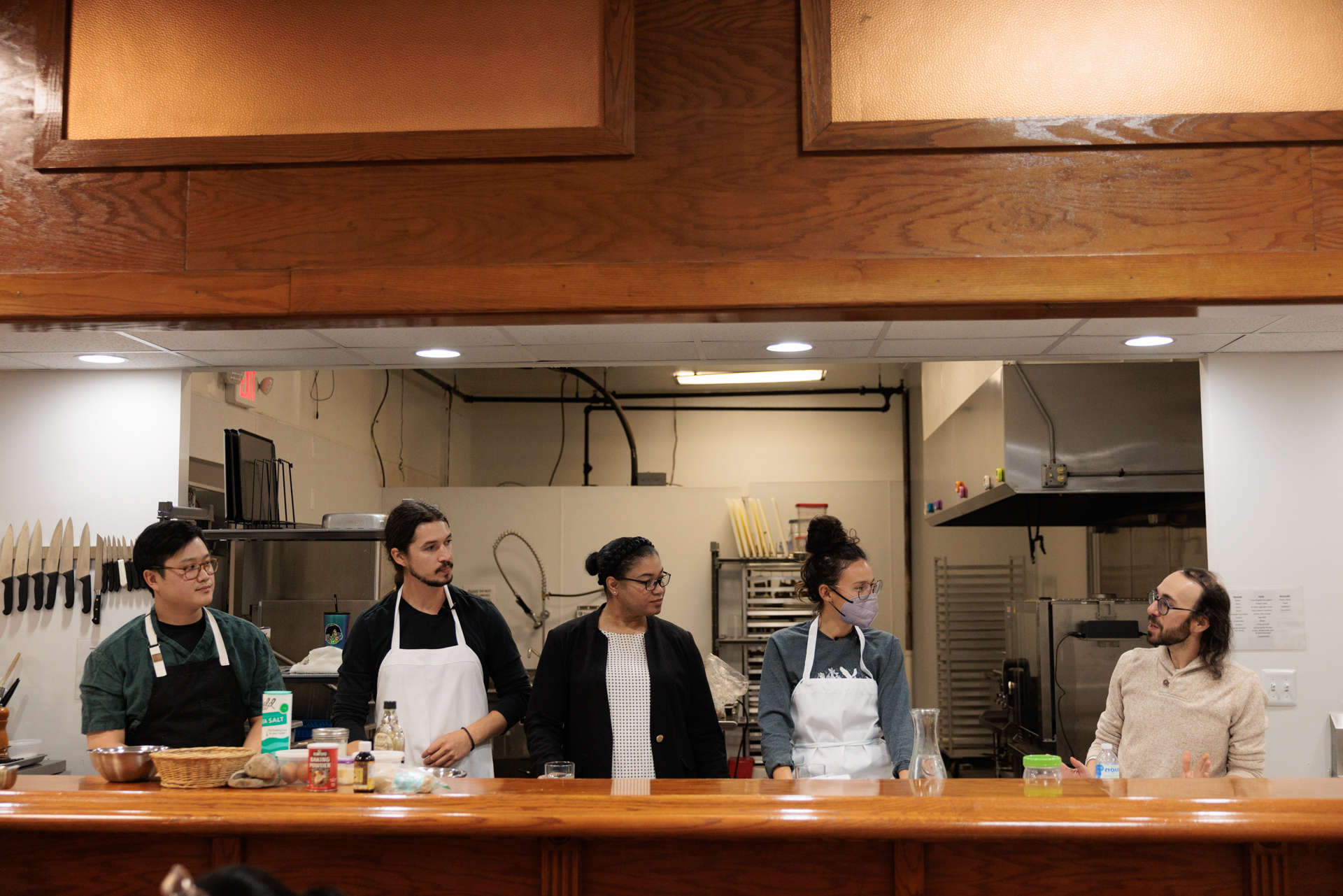Mykala Bledsoe knows firsthand the importance of connection with the land. Now a senior at the George Washington University, Bledsoe grew up harvesting beans, squash, tomatoes, berries and more from her grandparents’ garden in Frederick, Md.
“My grandmother's garden provided a lot of comfort and stability and just also a place for connection,” said Bledsoe, a senior in the Columbian College of Arts and Sciences’ B.A./M.A. sociology program.
As a child, Bledsoe understood that the collaborative, holistic way her family approached food and nature reflected their Indigenous heritage, but she knew very few specifics of that heritage. Bledsoe’s grandfather, who grew up Mescalero Apache in the Southwest, had a difficult past marked by individual and systemic trauma that for many years he preferred not to discuss. When she got to GW, Bledsoe joined Students for Indigenous and Native American Rights (SINAR) in search of a space to reconnect with her own ancestry, make connections with other cultures and “learn, listen and be in community” with other Native students.

November is Native American Heritage Month, an opportunity to highlight and uplift the living voices, stories and cultures of Indigenous people throughout the United States. At GW, SINAR’s focus for the month is on the centennial of the Snyder Act, also known as the Indian Citizenship Act, which in 1924 conferred American citizenship on all Indigenous people born in the United States.
"This November, we honor the diverse and enduring traditions of Native American communities and cultures past and present,” GW President Ellen M. Granberg said. “At GW, we proudly celebrate their achievements and invaluable contributions, which continue to enrich our university and nation. This month, I hope you will join me in reaffirming our commitment to amplifying Indigenous voices and perspectives throughout our community.”
For Bledsoe, affirming and exploring her family’s heritage is an unfolding process. Her grandfather and his siblings have gradually opened up about their childhood, including their own father’s internment as a prisoner of war during World War II and the government’s neglect afterward. Opening these doors can be painful, Bledsoe said, and her grandfather’s and other Indigenous American stories can’t be contained within a single month. (Bledsoe also emphasizes that her story is only her own, not representative of SINAR or the GW Indigenous community as a whole, and that that community in turn is not monolithic.) November does, however, provide an opportunity to engage more consciously with America’s multiple histories and intertwined present.
“There can be a lot of misconceptions about what Indigenous communities mean and how they exist or practice in this area, partly because D.C. is an urban environment and representation and community are not fostered easily,” she said. “So we all have an active role in working to hold that space—not for any single community as a monolith, but by learning about and engaging with many different community members.”
Members of the GW community have more opportunities than ever to learn the history and hidden worlds within the land they walk on, Bledsoe said, with resources including the “Once As It Was” map of Washington, D.C., and the Guide to Indigenous Lands digital mapping project. Many local institutions also have troves of information about Indigenous art, history and culture, including the Library of Congress, the National Gallery of Art and of course the National Museum of the American Indian.
That knowledge may be especially important at a moment when land and resources everywhere are threatened by climate change and environmental malpractice, Bledsoe said.
“The struggles that Indigenous people share all around the world are all interconnected,” Bledsoe said. “The Earth has intrinsic value, and to be able to fully practice and respect indigeneity means to protect the Earth as well.”
Follow SINAR on social media for event announcements on an ongoing basis all year. A partial list of events at GW and in the D.C. area includes:
Nov. 15 at 6 p.m. The Snyder Act: Understanding Native American Citizenship and Suffrage with Dr. David Silverman
Corcoran Hall, Room 103
725 21st St., NW
Ongoing through Nov. 26 Imagining Indigenous Cinema: New Voices, New Visions
National Gallery of Art, East Building
150 4th St., NW
Nov. 19 and 26 at 12:25 p.m. Native American Heritage Month/American Indian and Alaska Native Heritage Month Booth
Science and Engineering Hall, first floor
800 22nd St., NW
Nov. 19 at 2:15 p.m. Red Shawl Day acknowledgement and “Bring Her Home” screening
Multicultural Student Services Center
University Student Center, fifth floor
800 21st St., NW
Nov. 20 and 26 at 5:30 p.m. West End Library Screening Series: Native American Heritage Month
West End Neighborhood Library
2301 L St., NW
Nov. 22 to 29 Native Cinema Showcase 2024
Online
Nov. 22 at 6 p.m. Miss Chief Rocka
Online and in person
Kennedy Center Millenium Stage
2700 F St., NW
Nov. 23 at 3 p.m. The Native American History of Washington, D.C., with Armand Lione
Georgetown Neighborhood Library
3260 R St., NW
Nov. 23 at 6 p.m. Tia Wood
Millenium Stage
Nov. 25 at 1 p.m. The American Indian Citizenship Act of 1924 panel discussion
Online
Nov. 29 at 11:30 a.m. Native American Heritage Day: Honoring Zitkala-Ša with Hoop Dancer Starr Chief Eagle
National Museum of the American Indian
4th St. and Independence Ave., SW




